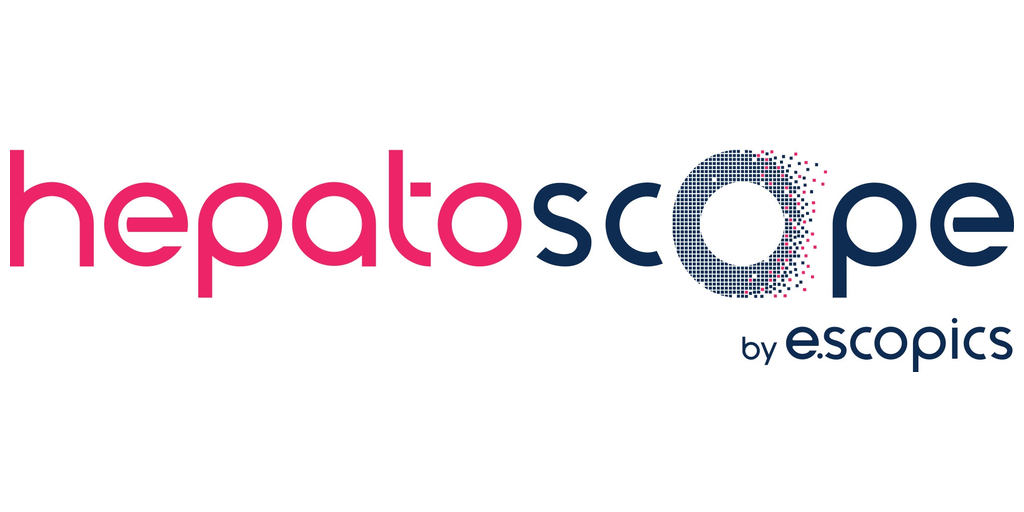E-Scopics’ Commercially Available Ultraportable Ultrasound Device Presented at the 2024 Annual Meeting of the European Association for the Study of Diabetes
AIX-EN-PROVENCE, France–(BUSINESS WIRE)–E-Scopics, the France-based medical ultrasound company and creator of Hepatoscope®, will showcase its unique software-based liver assessment tool at the 2024 European Association for the Study of Diabetes (EASD) Congress in Madrid, Spain, from September 10 to 12, 2024. The newly published clinical practice guidelines, established in collaboration with the European Association for the Study of Diabetes (EASD), the European Association for the Study of Obesity (EASO), and the European Association for the Study of the Liver (EASL) strongly recommend the use of transient elastography for identifying and triaging individuals with metabolic dysfunction-associated steatotic liver disease (MASLD) and liver fibrosis. Recent clinical results presented at the EASL 2024 conference illustrate the efficacy of the Hepatoscope in accurately producing liver stiffness measurements (LSMs) at the bedside, indicating that the tool can help front-line clinicians meet the newly issued guidelines for second-line, non-invasive staging of liver fibrosis.
MASLD is the most common chronic liver disease worldwide, and can progress to cirrhosis and hepatocellular carcinoma. It is also largely reversible, however, and has been shown to resolve under targeted lifestyle interventions. Recent pharmaceutical developments offer new cause for optimism in addressing this costly, potentially fatal disease: earlier this year, the U.S. FDA conditionally approved the use of Rezdiffra® (resmetirom) to treat MASH (metabolic dysfunction-associated steatohepatitis), the active inflammatory form of MASLD, in adults with moderate to advanced liver fibrosis. Accurately staging liver fibrosis is not only predictive of liver-related outcomes; it is also a prerequisite for prescribing Rezdiffra.
For people with MASLD to take advantage of the full range of available interventions, the EASL-EASD-EASO Clinical Practice Guidelines recommend a “stepwise approach using blood-based scores (such as FIB-4) and, sequentially, imaging techniques (such as transient elastography) . . . to rule-out/in advanced fibrosis.” This recommendation fits in with the guidelines’ larger goal of “case-finding”: a goal that acknowledges the widespread underdiagnosis of MASLD, its massive prevalence notwithstanding. Thanks to its ultraportability, quantitative features and ease of use, Hepatoscope is ideally positioned to both case-finding and risk stratification.
Unlike traditional ultrasound machines, the Hepatoscope consists of a small, handheld transducer and a software application that can be loaded onto a consumer laptop or tablet. Having earned the CE mark for use in Europe and FDA clearance for use in the U.S., Hepatoscope is available to any clinic or healthcare center via an innovative and cost-effective model that E-Scopics has called “Ultrasound-as-a-Service.” This model helps the mission of at-risk patients case-finding by removing barriers of cost, cumbersomeness, and—through its image guidance, LSM quantification, and report generation—the challenge of a shortage in trained ultrasound technicians. Similar to what took place at the American Diabetes Association (ADA) meeting in June, E-Scopics’ booth visitors at the EASD Congress (IFEMA, Hall 10, Booth J04) will surely acknowledge Hepatoscope easy to use, enabling any front-line clinician to obtain useful diagnostic (or monitoring) information.
Since its clinical exposure, Hepatoscope has been used in several clinical studies (from Bordeaux University Hospital, Lyon University Hospital and University of Arizona), which led to positive results when compared to other standard non-invasive methods. These reports confirmed the applicability of the Hepatoscope as a non-invasive test to stratify patients at risk of liver fibrosis and MASLD/MASH, and the authors proposed it as an alternative to existing methods of obtaining LSMs. They suggested that the Hepatoscope would be of particular use in primary care settings, diabetes centers, and gastroenterology clinics, where populations at risk for MASLD could be assessed and triaged to liver specialists—all in the course of their routine care.
Pr Cyrielle Caussy, University professor in Nutrition at the Integrated Center for Obesity, Department of Endocrinology, Diabetes and Nutrition, Lyon University Hospital, and principal investigator of the NAFLD-Screen study using Hepatoscope commented, “Unlike the USA Food and Drug Administration, The European Medicines Agency has not yet given its approval to Rezdiffra® (resmetirom). We hope our patients here in Europe will soon benefit from it. Therefore, it is essential to be able to detect patients with F2 and F3 fibrosis, in particular within patients with Type 2 Diabetes (T2D). As of today, the barrier is the availability of tools to measure liver stiffness. Hepatoscope is a very interesting candidate for screening patients eligible for treatment. In our experience in the NAFLD-Screen study, Hepatoscope seems well adapted to patients with T2D and/or with severe obesity. The device allows measurement of tissue stiffness and brightness under image guidance, and is accessible to the entire staff.”
Claude Cohen-Bacrie, Co-founder and CEO of E-Scopics stated, “What is happening ends up being totally aligned with what our vision was at the inception of E-Scopics, when we chose Liver as a first application of our software-based dematerialized point-of-care ultrasound technology. We were all aware of the high and growing prevalence of MASLD and MASH worldwide and heard the urgency of the need for more accessible, more affordable and more reliable tools to detect this disease, which was expressed by clinicians in charge. We created Hepatoscope, a simple software app, downloadable on PCs and available as a subscription-based service. It provides the premium ultrasound tools through an ultraportable platform that can penetrate any healthcare institution”. Claude Cohen-Bacrie concluded, “The goal, today more than ever, is access to care for patients at risk”.
About E-Scopics: E-Scopics S.A.S is a MedTech company headquartered in France. The company advances the accessibility, affordability, and ease of use of premium ultrasound tools at the point of care. Its agile software platform has dematerialized and automated ultrasound imaging technologies. Ultrasound-as-a-Service products derived from this platform are specific Apps commercialized with pay-per-use or subscription business models. The company’s first product, the Hepatoscope, leverages quantitative imaging capabilities to help any clinician assess liver fibrosis and steatosis—important markers of MASLD-MASH—non-invasively at the bedside. To learn more, visit www.escopics.com
Contacts
Dan Conley
Beacon Communications
+1 312-593-8461



